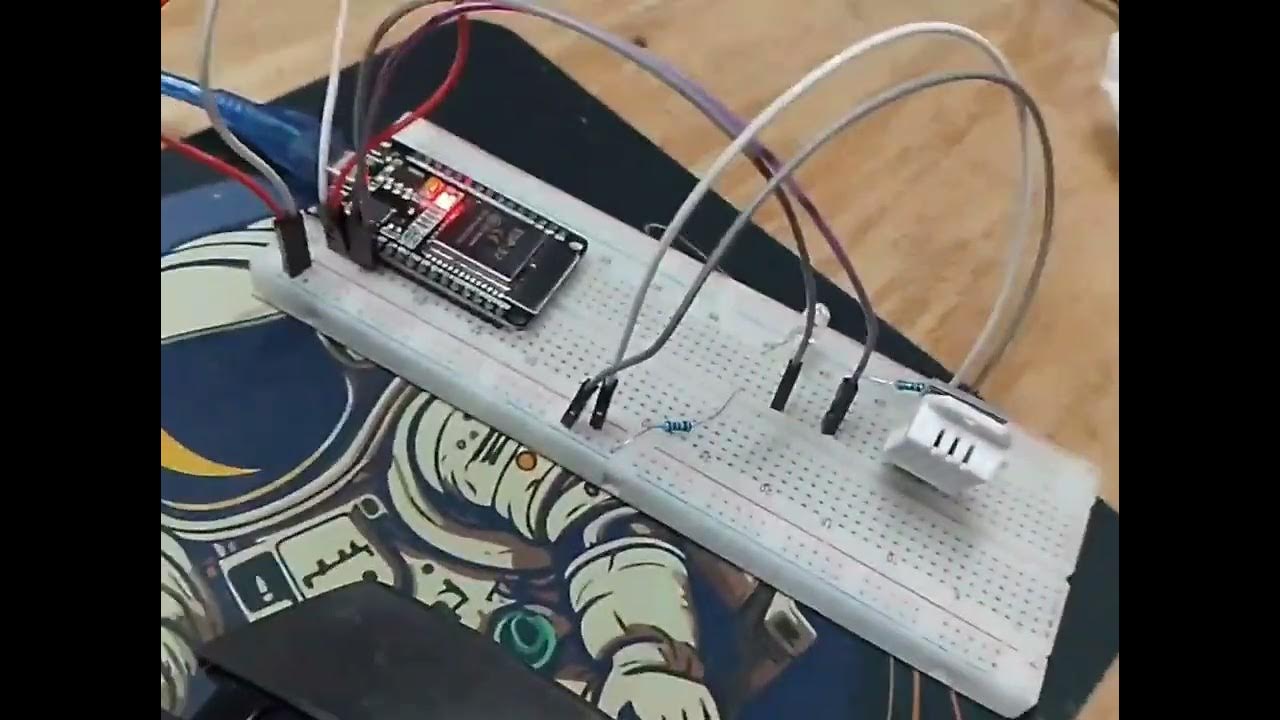How To Make A Mobile Phone Detector
Summary
TLDRThis video demonstrates how to build a circuit that makes an LED blink in response to phone calls and messages. By assembling key components such as a 3-1-3-0 IC, transistors, resistors, capacitors, and an LED on a breadboard, the circuit is designed to detect incoming/outgoing calls and messages on a phone. The LED blinks when a call is made or received and when a message is sent or received. The video walks through the step-by-step process of building and testing the circuit, offering clear instructions for successful assembly.
Takeaways
- 😀 The circuit uses a 9-volt battery and basic components like resistors, capacitors, transistors, and an LED.
- 😀 The circuit detects phone calls and messages, causing the LED to blink when such activities occur.
- 😀 The IC (ICCA 3130) is central to the operation, with its pins connected to other components like the transistor and capacitors.
- 😀 The LED’s longer leg is the anode (positive), and the shorter leg is the cathode (negative), which must be connected correctly to the circuit.
- 😀 Transistor BC548 is used in conjunction with the IC to control the LED's blinking based on the phone's signal.
- 😀 Pin connections on the IC include connecting pin 7 to the positive rail, pin 3 to the negative rail, and pin 2 to the transistor base.
- 😀 Capacitors (0.2-1uF, 100uF, and 47pF) play a key role in stabilizing and filtering the circuit to ensure it functions smoothly.
- 😀 The 1k Ohm resistor helps to regulate current flow in the circuit, protecting the LED and other components.
- 😀 The circuit is powered by a 9-volt battery, making it portable and easy to set up on a breadboard.
- 😀 Testing the circuit involves making or receiving a call or message on the phone, with the LED blinking as an indicator, and it stops when the call or message ends.
Q & A
What is the purpose of the circuit described in the script?
-The circuit is designed to make an LED blink in response to phone activities such as making or receiving a call, or sending and receiving text messages.
Which components are used to construct the circuit?
-The circuit uses resistors (3.1k ohm, 100k ohm, 2.2M ohm), capacitors (47pF, 0.22µF, 100µF), a BC548 transistor, an LED, a 9V battery, an IC (3.1.3.0), and a breadboard.
How is the IC connected to the breadboard?
-The IC (3.1.3.0) is inserted into the breadboard, with pin 7 connected to the positive rail and the power pin connected to the negative rail of the breadboard.
What role does the transistor play in the circuit?
-The transistor acts as a switch. It is controlled by the IC and allows the LED to blink when the transistor is activated by phone calls or messages.
What is the significance of the 1k ohm resistor connected to the collector of the transistor?
-The 1k ohm resistor limits the current flowing through the transistor's collector, preventing potential damage to the circuit and ensuring safe operation of the LED.
How is the LED connected in the circuit?
-The LED's anode is connected to the emitter of the transistor, while the cathode is connected to the negative rail of the breadboard. This allows the LED to blink when the transistor is activated.
What happens when the phone makes a call in this circuit?
-When a call is made from the phone, the IC triggers the transistor to activate the LED, causing it to blink.
How does the circuit behave when a phone receives a call?
-When the phone receives a call, the LED blinks, similar to the behavior when a call is made, signaling the incoming call.
What is the effect of rejecting a call on the LED?
-When the call is rejected, the LED stops blinking, indicating that the call was not answered.
How does the circuit respond to text messages?
-The LED blinks while the phone is sending or receiving a message. The LED stops blinking once the message is fully sent or received.
Outlines

هذا القسم متوفر فقط للمشتركين. يرجى الترقية للوصول إلى هذه الميزة.
قم بالترقية الآنMindmap

هذا القسم متوفر فقط للمشتركين. يرجى الترقية للوصول إلى هذه الميزة.
قم بالترقية الآنKeywords

هذا القسم متوفر فقط للمشتركين. يرجى الترقية للوصول إلى هذه الميزة.
قم بالترقية الآنHighlights

هذا القسم متوفر فقط للمشتركين. يرجى الترقية للوصول إلى هذه الميزة.
قم بالترقية الآنTranscripts

هذا القسم متوفر فقط للمشتركين. يرجى الترقية للوصول إلى هذه الميزة.
قم بالترقية الآنتصفح المزيد من مقاطع الفيديو ذات الصلة

Kenapa gak dari dulu bikin alat canggih seperti ini ‼️ stop kontak 220v tanpa kabel

How to Blink an LED with Arduino (Lesson #2)

Program Arduino Lampu Kedip Secara Online Gunakan WOKWI Tutorial DIY @tptumetro

Pembahasan UKK MPLB tahun 2025 || Tugas Menangani Panggilan Telepon Kantor

penjelasan keterhubungan antara ESP32 dengan Blnyk web

Raspberry Pi LED Blinking || Interfacing raspberry pi with basic peripherals || FIOT || CSE || JNTUH
5.0 / 5 (0 votes)
